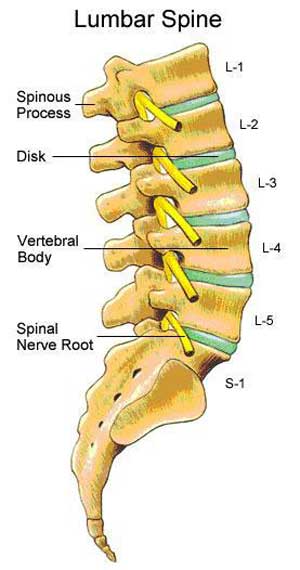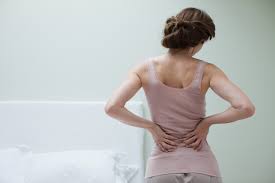Feeling your best is important, but there are health issues that get in the way. When you have discomfort around your lower back or spinal region, you may not immediately think of arthritis. It’s important to pay attention to the symptoms and what your body is telling you about your spinal health. A diagnosis by a medical professional can point out the issues and slow down degenerative issues with the appropriate treatment plan.
WHAT IS SPONDYLOSIS?
One type of arthritis that affects the spine is called spondylosis. It can be triggered when there is ongoing wear on the spine over time. The issue continues to get worse with age since this type of damage is a degenerative arthritis of the spine, also called osteoarthritis. The joints and the discs in the spine deteriorate naturally, but not everyone experiences symptoms. Those who feel spondylosis symptoms can feel a great deal of pain from nerve pressure. It can make it hard to walk or complete routine tasks.
As a person gets older, the cushion between the discs and the joints can start to erode. Problems including arthritis and other health issues can cause that erosion to progress faster than if it was only caused by the aging process.

WHAT CAUSES SPONDYLOSIS?
There can be several different causes of spondylosis. For many individuals, they have multiple contributing factors. They include:
- Age
- Anxiety
- Depression
- Genetic factors
- Obesity
- Psoriatic arthritis
- Repetitive movements and/or lifting for work tasks
- Sedentary lifestyle
- Spinal Injury
- Spinal surgical procedures
- Tobacco use
CERVICAL SPONDYLOSIS
The type of spondylosis most people are diagnosed with is called cervical spondylosis. The risk tends to increase as a person gets older. The discomfort may start in the neck and then move to the back and into the spine. It is believed at least 85% of those over the age of 60 have this issue to some degree. However, this type of arthritis can affect any joints in the body.
LUMBAR SPONDYLOSIS

Another common type is lumbar spondylosis. This typically comes about in people over 50 as the discs in the back start to lose their moisture and dehydrate. They also start to shrink, and that offers less cushion and support than before. The bones can become weaker, especially for those who are overweight or engage in repetitive movements/lifting at work.
Many with lumbar spondylosis don’t have any symptoms showing. Others may experience sharp pain in the lower back. Others have a chronic, dull ache in that part of the body. Stiffness in the lower back can result from not getting enough exercise regularly. Many patients find they feel better if they eat better, walk daily, and if they lose any extra weight.
MYELOPATHY
When the spinal cord has been injured the result is called myelopathy. This can happen because of compression to the spine resulting in a large amount of pressure in one area. Common causes of myelopathy include:
- Autoimmune disorders
- Disc Degeneration
- Herniated Disc
- Spinal Stenosis
- Spinal Trauma
Myelopathy is degenerative, and medical efforts are taken to reduce pain and slow the progression. Some patients respond well to treatment including medications or injections. Others will require surgery to reduce the compression and pressure. It all depends on the severity of the issue for the spine and how it is affecting the quality of life for the patient.
Many patients find they have to change their lifestyle to begin improving. For example, they may need to engage in more physical activity. Changing their work station to one that is ergonomic allows them to improve posture and take the pressure off the spine. For others, they will need to change jobs or stop working. Their spine will continue to deteriorate if they continue to partake in labor-intensive tasks that puts pressure on their back.
COMMON SYMPTOMS OF SPONDYLOSIS
The symptoms of a person with spondylosis depend on their overall health and the severity of the problem. It typically starts with pain and stiffness that comes and goes. The problems aren’t severe but they are noticeable in day to day life. The pain and stiffness tend to be present early in the morning and then subsides when the person starts moving around for the day. When the pain and stiffness linger or the pain is severe is when there’s a reason to be concerned and seek medical advice.
Other spondylosis symptoms a person can experience include:
- Grinding in the joints
- Frequent headaches
- Loss of balance and coordination
- Loss of control for bladder or bowels
- Muscle spasms
- Spine Pain
- Popping in the joints
- Stiffness
EFFECTS OF SPONDYLOSIS
For most individuals, spondylosis progresses slowly. They don’t have pain or discomfort initially. For those that do notice pain or other changes, it is important to share those changes with your medical doctor. They can help to slow down the progression of the spondylosis. Some people over 60 don’t have any symptoms so the issue may not be discovered unless seen while performing imaging tests for another issue. If it is diagnosed, it will be monitored and a treatment plan may be implemented if signs of progression develop.
SPONDYLOSIS TREATMENT
When spondylosis isn’t causing a great deal of pain, the treatment can be initiated by the patient at home. This includes over the counter pain relievers, back support, and losing weight. A daily exercise program helps a person stretch supporting back muscles and keep their body flexible. When the pain is severe prescription pain medications may be prescribed by a spinal doctor.
Anti-inflammatory medication can be used to help prevent flares. Such medication is taken daily at a low dose. This makes it easier to control because the patient is preventing the inflammation rather than just trying to control it once a flare develops. Muscle relaxers may be prescribed when muscle spasms occur. For severe pain, steroid injections at regular intervals provide relief as a first course of treatment.
Some patients benefit from physical therapy to help them with posture, balance, and coordination. Others find acupuncture or regular visits to the chiropractor help to offset some of the symptoms of spondylosis. When these treatments aren’t enough, spinal surgery is the next option to discuss with your doctor.
SPONDYLOSIS SURGERY
Surgery relieves pain from pinched nerves due toe spondylosis, causing numbness or ongoing chronic pain in the spine. It can also help when someone has so much pressure they can’t control their bladder or their bowels. Surgery is only considered when the issue continues to get worse and other forms of treatment haven’t offered much relief.
There are a few different types of surgeries that can provide relief in case of spondylosis. Facetectomy, foraminotomy, laminectomy, and laminotomy are all options to decompress the spine, and all involve removing certain parts of the spine. Facetectomy removes the facet joint of the spine in the area that is pressing on nerves. Foraminotomy is used when a disc or bone spur presses on a nerve through canals in your spine call the foramen. The canal is opened to make room for the nerves, and may involve removing parts of the spinal disc, or other parts of bone in order to do this. Laminectomy and laminotomy are similar, in that they operate on the part of your spine called the lamina, but laminectomy removes all of the lamina, while laminotomy creates more room by removing a portion of the lamina.
You’ll have to take it easy on your back for a while after surgery, and depending on how extensive the surgery is you may take weeks or months to fully recover. More detailed instructions are given after the surgery for rest, how to prevent infection at the incision location, and what appointments are needed as a follow-up.


